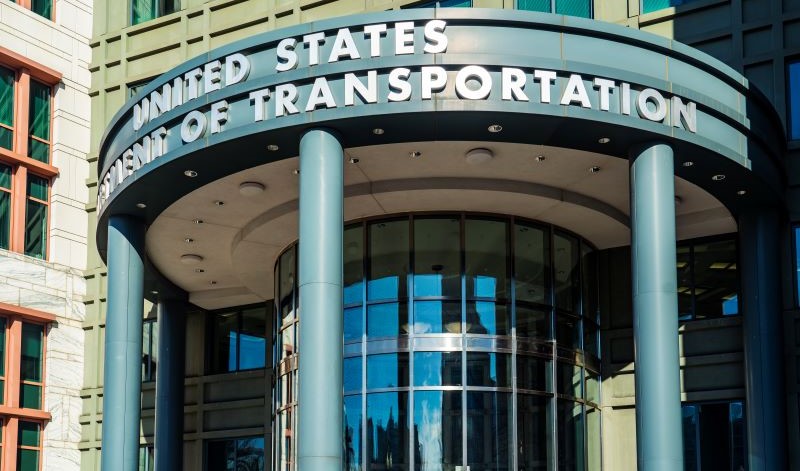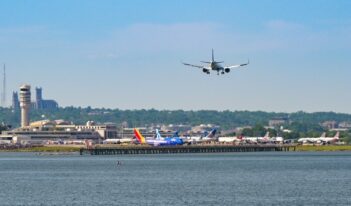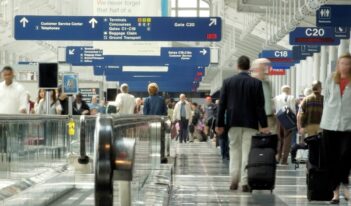
The Transportation Department’s labor policies impede necessary safety reforms.
A longstanding shortage of air traffic controllers, which a Saturday Seminar in The Regulatory Review recently explored, presents a well-known challenge to the effectiveness of the U.S. Department of Transportation’s safety regulations. Less well-known or understood, however, is how labor regulation at the Transportation Department could exacerbate safety challenges in aviation, freight rail, and other industries.
Surprisingly, at the time of the January 29 airplane crash at Ronald Reagan Washington National Airport, just a single air-traffic controller was overseeing both helicopter and plane traffic. The Federal Aviation Administration (FAA) allows controller responsibilities to be combined about an hour earlier than normal in a practice called the “early shove,” enabling controllers to depart the job early if traffic levels are below certain limits, though they are still paid as if they worked a full shift. Sean Duffy, Secretary of the Transportation Department, reportedly said that he would end the practice.
Accidents often spark reviews of safety protocols. Regulators may then act to ensure compliance with minimum safety standards, but economists observe how new regulations, in conjunction with union bargaining, can distort the supply of air traffic controllers and their wages unintentionally. Although it is an imperfect comparison, a recent study found that European countries employ 22 percent more controllers than the United States, even though U.S. airspace is more densely used. European controllers also earn significantly more than those in the United States. Air traffic controllers in the United States earned a median annual wage of $137,380 in 2023, whereas air traffic controllers in Spain, for example, make an average of $193,878 per year. Differences in supply and salary of controllers between the United States and European countries reflect a complex set of factors including negotiations between regulators and the respective air traffic control unions.
The National Air Traffic Controllers Association (NATCA) represents aviation safety professionals, some 14,000 air traffic controllers employed by the FAA, who are organized into 15 collective bargaining units. NATCA engages with the FAA in complex negotiations for each employee bargaining unit for more than just wages. NATCA and the FAA have negotiated for minimum standards for working conditions—including breaks of 10 hours between shifts—collaborative safety initiatives, the adoption of stable funding sources, technology modernization, and a collective voice for controllers.
Some observers, however, blame the institutional setup of the FAA and NATCA for regulatory collusion, labor stalemates, and a delay in the modernization of computer systems. The U.S. air traffic control system, a set of technologies and infrastructures enabling controllers to keep track of air traffic, is woefully out of date, with some radar systems dating back to World War II and others still using paper-based tracking. There have been significant outages of these systems, including a 2023 national airspace shutdown. NATCA and the FAA were supposed to be negotiating to fast-track the Next Generation Air Transportation System program to modernize air traffic control systems, but it appears that the project is a decade behind schedule and could cost some $40 billion.
The Transportation Department’s labor allocation inefficiencies and other challenges do not end with air traffic control; there is also a problem with freight-rail that could be attributed to rules from the Federal Railroad Administration (FRA). Under the rubric of safety, the FRA issued a rule in 2024—a reapplication of a rule first applied in 2016 but removed in 2019—opposed by industry, that mandated a two-person minimum crew for freight trains. Historically, freight rail companies and unions bargained to determine crew staffing levels. It appears, however, that the FRA rule was the result of unions bypassing traditional negotiating channels and requesting regulation directly from the government. Unions claimed that the rule is necessary for safety, but the National Transportation Safety Board has found that single-person crews can operate safely in both passenger and freight rail operations. This rule is controversial in that it is not required by statute and fails to account for technological advancements and intelligent transportation systems that make two-person crews redundant. Transportation Department data show continuous safety improvements in the freight rail industry over decades, following tens of billions of dollars of investment in precision control and other technologies. Yet unions still claim the rule is needed for safety, even though intelligent transportation systems are rendering this role obsolete in the surface transportation industry globally.
Automation has been proven to reduce human error and improve safety, as evidenced by some 60 fully automated metro systems in operation worldwide for over 40 years. Key features and benefits of intelligent transportation systems include reduced human error, consistent, predictable computer operators, real-time data processing and sensing, faster reaction times, improved traffic coordination, predictive maintenance, and programmed compliance to protocols. These features and benefits do not mean that there are never malfunctions, but, overall, intelligent transportation systems deliver greater safety over time and distance and justify the freight industry’s opposition to the rule.
Railway companies from Florida and Indiana have sued the FRA over the two-person rule, arguing that it is arbitrary because it reduces competition and incentives to compete with energy-efficient, autonomous solutions, without conferring any likely safety benefits.
The 2023 East Palestine, Ohio, train derailment, for example, caused by an undetected overheated wheel bearing, would not have been prevented by having a two-person crew. The solution lies in enhancing sensor technology and reducing human error, a leading cause of accidents. Similar problems can be prevented in the future not by expanding the number of operators in a train’s cabin—there were three onboard in the East Palestine derailment—but with more on-board sensor technologies and other general solutions that reduce human error.
The root cause of the train derailment likely stems from the outdated “common carrier obligation” that caps the limit freight rail operators can charge for shippers to carry hazardous cargo. Today, many shippers enjoy artificially low rates, putting the cost on society at large when railroads should be able to charge shippers of hazardous goods a higher rate to cover the cost of safety.
Incidents such as the January 29 airplane crash at Reagan National Airport suggest the need for a reckoning with labor policy at the Transportation Department. Even though unions advocate the concerns of their workers, it does not appear that negotiations with the Transportation Department have always delivered optimal outcomes for Americans. Misallocation of labor can result in accident and death and can exacerbate the effects of delayed investment in technological innovations such as modernized air traffic control systems.
The Transportation Department is a sprawling cabinet agency that employs 55,000 employees and received a congressional appropriation of $106 billion in 2024. Duffy must reform the Transportation Department so that it focuses on policies that improve safety, such as prioritizing air traffic control modernization and reorienting labor relations to deliver real safety outcomes. The Transportation Department’s obligation is to protect the American people’s safety first, not to implement the preferences of favored parties.




